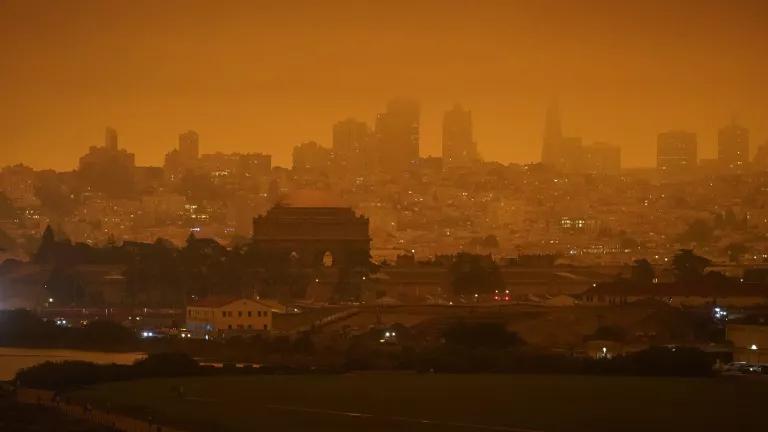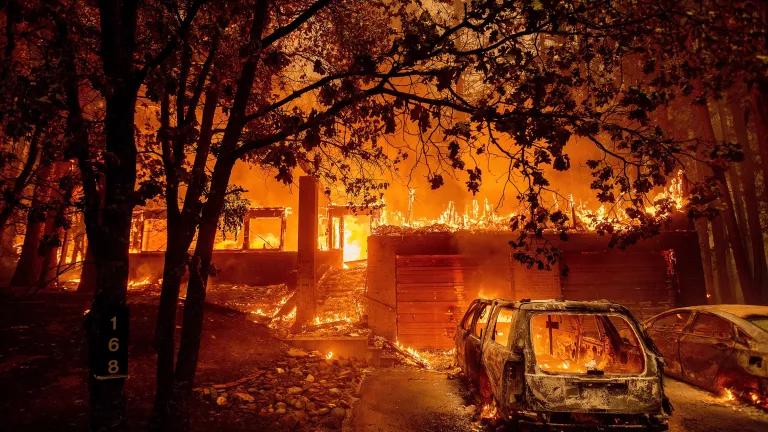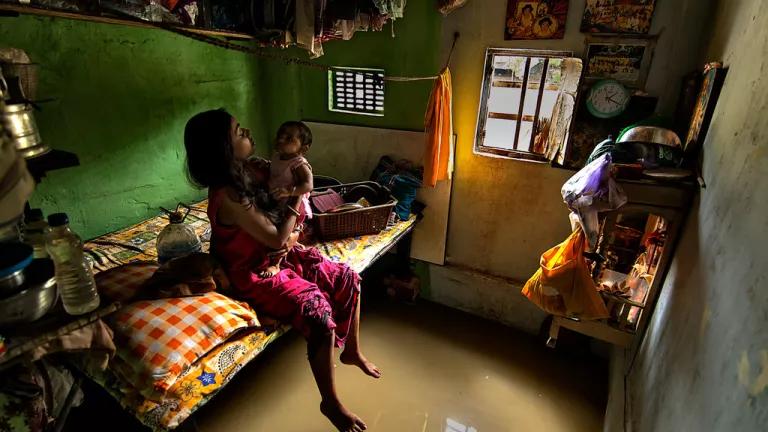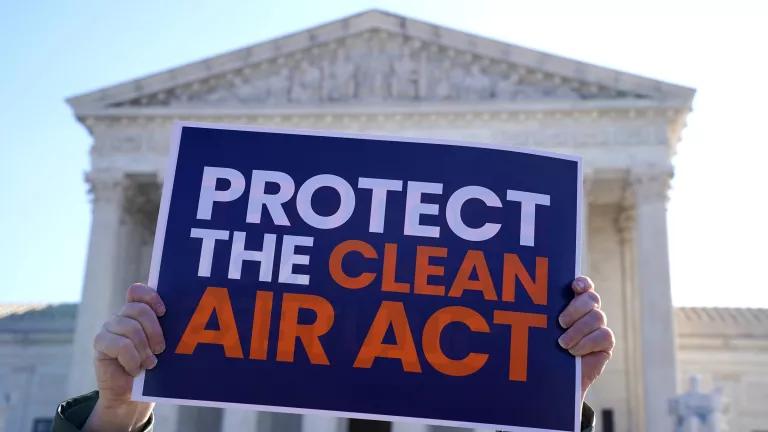Western Heat and Wildfires Rage On, with Millions at Risk

The health risks of searing heat and wildfires are growing, and climate change is making things worse.
More than six months into the COVID-19 pandemic and after weeks of record-setting searing heat across the western United States with temperatures soaring above 120 degrees Fahrenheit in Los Angeles County last weekend—the region is now responding to a major wildfire crisis. The harrowing images of menacing flames engulfing homes, urgently evacuated residents, heroic first responders, and dim, smoke-covered skies demonstrate the staggering human toll of a widespread disaster. And these pictures also confirm what the science says: Climate change and expanding urban development in fire-prone areas are putting more people in the path of dangerous wildfires over longer periods of each year.
But even as these wildfires burn, the Trump administration is arguing that California has no “compelling and extraordinary” reasons to cut the vehicle emissions that worsen the climate crisis.
This summer, as climate change has inflicted record-setting heat on already stressed residents out west, it has also set the stage for enormous wildfire risks. As temperatures have risen, seasonal rainfall patterns have changed, and soil and vegetation moisture has declined, the wildfire season in the western United States has grown more severe over the years. For example, the annual area burned by wildfires in California increased by 500 percent from 1972 to 2018. Globally, 77 percent of countries experienced an increase in human exposure to wildfires from the 2001–2014 period to the 2015–2018 period. California this year has already set a new record for the number of acres burned—and the season is far from over.
How to Stay Safe
The Centers for Disease Control and Prevention (CDC) has assembled a list of tips to decrease health risks from wildfires. These include:
- Preparing for fires: Confirm community evacuation plans and gather emergency supplies. Consider purchasing a respirator to reduce smoke exposure, but make sure it fits well.
- Evacuate if advised: Monitor the news to learn about current evacuation orders. Follow the instructions of local officials about when and where to evacuate.
- Check local air quality: Listen and watch for news or health warnings about smoke.
- Protect yourself during fire cleanup: Be aware that cleanup work can expose you to ash and other toxic fire remnants that may irritate the eyes, nose, lungs, or skin.
The U.S. Environmental Protection Agency’s wildfire smoke guide helps to inform the public about these health risks and health-protective strategies to consider during wildfire events.
Health Threats from Fires and Smoke
Wildfires pose numerous threats to public health, including to people directly in harm’s way from burning flames and for millions more exposed to toxic air pollutants in wildfire smoke, which can drift hundreds of miles downwind. An NRDC study found that, in 2011, the area affected by wildfire smoke in the United States was nearly 50 times larger than the area burned directly by fires. That’s worrying because wildfire smoke contains many damaging contaminants, including fine particulate matter (PM 2.5)—one of the deadliest air pollutants known to humans.
Breathing wildfire smoke is linked to a whole host of major health problems, such as respiratory infections, cardiac arrest, lung cancer, stroke, low birth weight, mental health conditions, and exacerbated asthma and chronic obstructive pulmonary disease. Recent science points to lung and heart problems after just one hour of smoke exposure.
A Costly Health Toll
The many types of health problems triggered by wildfire smoke are expensive and sometimes fatal. A study NRDC led last fall estimated $4 billion in health damages from fires in Washington and Colorado in a single year. Those costs mounted from more than 3,300 trips to the emergency room, 600 hospitalizations, and 400 fire-related deaths. We’ve also analyzed the health and economic damages of recent fire seasons in California and Oregon.

Our study also identified disproportionate health risks for Medicare and Medicaid patients from wildfire-triggered illness. This finding aligns with evidence that older adults and the economically disadvantaged are among those most at risk to the health effects of climate-sensitive events, such as wildfires. People especially vulnerable to PM 2.5 and other wildfire-generated air pollution exposures include children, older adults, pregnant women, people with preexisting cardiopulmonary disease, communities of color, economically disadvantaged communities, and those with preexisting chronic health conditions like asthma, diabetes, and obesity. For firefighters and other outdoor workers, wildfire smoke is a major occupational health risk.
The billions of dollars Americans spend each year to deal with the serious medical problems caused by wildfires represent a small fraction of the costs of inaction on the climate emergency.
Climate Action Is Urgent
As awful as this wildfire crisis is, we know that even worse and more widespread heat and fire dangers are on the way if we do not confront the underlying climate problem head-on. The growing human misery caused by this year’s wildfires makes it clearer than ever that we must better equip communities to prepare for the many physical and mental health harms that wildfires trigger. If we fail to act, projected increases in the extent of future wildfires will put more emergency responders and recovery workers in dangerous situations and expose even more people to unhealthy wildfire smoke. Nobody is immune to the health risks of climate change.
To prevent even more suffering and irreversible damage in the years to come, we’ve got to take the sobering evidence of climate harms seriously and implement ambitious actions to reduce pollution that will save lives and billions of dollars.



